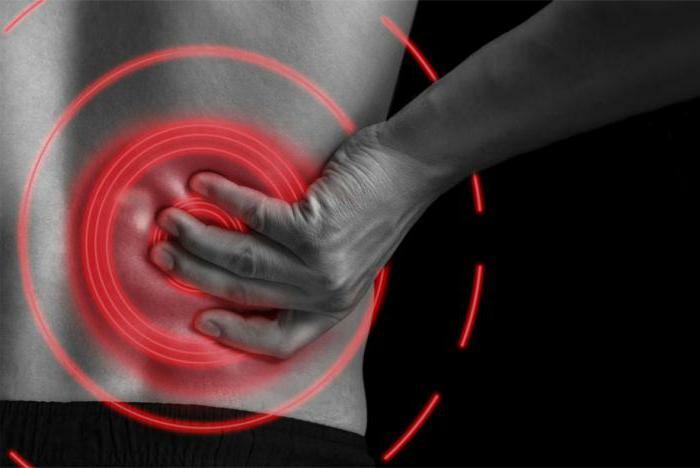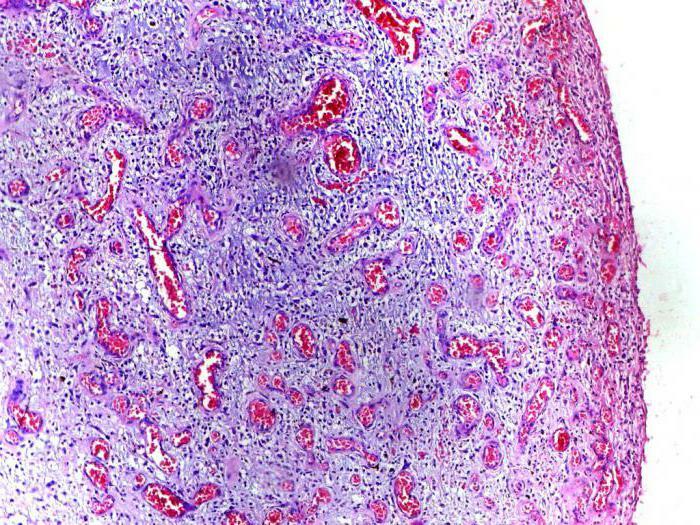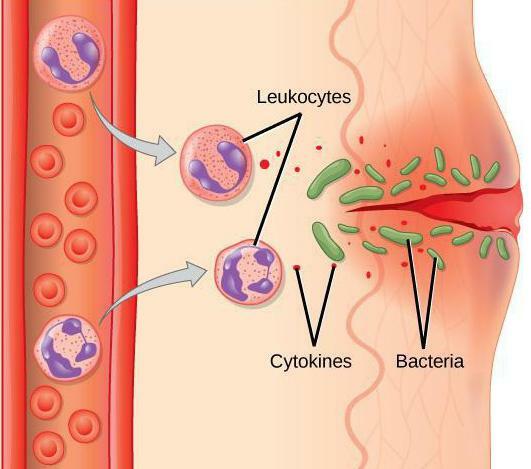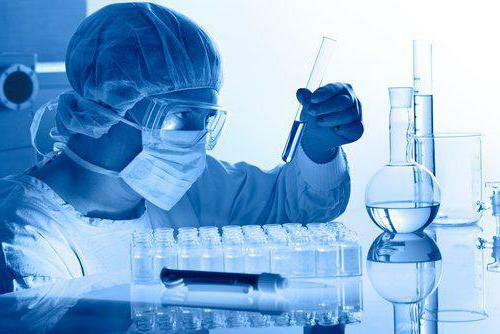Inflammation. Stages of inflammation and their symptoms
The human being is quite fragile. But nature, caring about the survival of the species, gave people a very significant gift - immunity. It is thanks to him that our body exists, evolves and prevents aggressive infectious agents.
Inflammation - harm or defense of the body?
The Latin word inflammo in translation means "burn", and its other interpretation is inflammation. The stages of inflammation, its types and forms will be described in detail in this material. First, you need to understand the essence of the process and find out its meaning for the human body.  Similar changes under the influence of certain circumstances( diseases, injuries, the presence of parasites, allergic reactions) appeared not accidentally - it is an immune reaction to the invasion of the infection, the destruction of cellular structures or allergens. This process is aimed at localizing the damaged area, isolating it from healthy tissues. Such actions of the body are caused by the need to fix the pathogenic factor in the field of inflammation, the utilization of its decay products and the healing of the site of intrusion. As a result, there is a mandatory development of immunity.
Similar changes under the influence of certain circumstances( diseases, injuries, the presence of parasites, allergic reactions) appeared not accidentally - it is an immune reaction to the invasion of the infection, the destruction of cellular structures or allergens. This process is aimed at localizing the damaged area, isolating it from healthy tissues. Such actions of the body are caused by the need to fix the pathogenic factor in the field of inflammation, the utilization of its decay products and the healing of the site of intrusion. As a result, there is a mandatory development of immunity.
It is important to consider that inflammation is not synonymous with infection. This is a typical immune response to any pathogenic entry into the body, whereas an infection is an aggressive agent provoking such a reaction.
Historical Background
Inflammation, inflammation, its characteristic features were known as early as the beginning of our era. In particular, these questions were of interest to the ancient scholars - Claudius Galen and the Roman writer Cornelius Celsus.  It was the latter that distinguished the four main components of any inflammation:
It was the latter that distinguished the four main components of any inflammation:
- erythema( the appearance of redness);
- edema;
- hyperthermia;
- pain.
There was also a fifth sign - a violation of the functions of the affected area or organ( the last point was supplemented much later by Galen).
Subsequently, many scientists were engaged in this topic. It was studied by the famous biologist Ilya Ilyich Mechnikov. He considered the inflammatory reaction a healing, a true natural gift, but still in need of further evolutionary development, since not all such processes lead to the recovery of the organism. Not to mention the fact that especially severe inflammations result in lethal cases.
Terminology
If in the body this process occurs( the stages of development of inflammation in this case are not taken into account), then to the name of the disease, as a rule, in Latin, the characteristic ending "-it" is necessarily added. For example, inflammation of the larynx, kidneys, heart, peritoneum, pancreas are called, respectively, laryngitis, nephritis, myocarditis, peritonitis, pancreatitis. If the joint inflammation of the organ is joined by the disease of the adjacent connective or adipose tissue, then the name "para-" is added to the name: paranephritis, parametritis( inflammation of the uterus), etc. But in this matter, as in any rule, there isexceptions, for example, such specific definitions as angina or pneumonia.
Why does inflammation occur?
So, what are the main causes of inflammation? They are divided into three types:
- Physical. This means that the inflammatory process in the body is triggered by various mechanical injuries, burns, including radiation, frostbite, the presence of foreign bodies, the impact of electric current.
- Biological. In this case, we mean the pathological process caused by microbes, parasitic agents and viruses. This category of symptoms is also attributed to pathogens of certain diseases, such as Koch's stick( tuberculosis), pale spirochete( syphilis), mycobacterium leprosy( leprosy), and others.
- Chemical. This group of reasons is based on the effects of various chemical substances( medicines, poisons, salts, alkalis, acids, as well as toxins formed in the body itself).
 Serious psychological trauma, persistent stress and alcohol abuse can also cause inflammation.
Serious psychological trauma, persistent stress and alcohol abuse can also cause inflammation.
Such processes either proceed acutely, or take a chronic form. When the reaction to the stimulus occurs immediately, that is, the leukocytes and plasma come into motion and behave in the affected areas very actively, this is characterized by an acute process. If the changes at the cellular level occur gradually, then the inflammation is called chronic. More details about types and forms will be discussed in the future.
Symptoms of
All stages of inflammation are characterized by similar underlying symptoms. They are divided into local and general. The first group of symptoms includes:
- Hyperemia( redness) of the affected area. This sign arises from the intense influx of blood.
- Hyperthermia - an increase in local temperature, because metabolism is accelerated.
- Puffiness, if there is impregnation of tissues with exudate.
- Acidosis - increased acidity. This symptom is often due to fever.
- Hyperalgia( intense pain sensations).Appears in response to effects on receptors and nerve endings.
- Loss or disruption of the affected area. Occurs as a result of all the above symptoms.
 By the way, the inflammation of the internal organs is not always manifested by painful sensations, but if the process proceeds on the surface, then virtually all of the above symptoms are present.
By the way, the inflammation of the internal organs is not always manifested by painful sensations, but if the process proceeds on the surface, then virtually all of the above symptoms are present.
Common signs can be detected using laboratory tests, in particular, an expanded blood test. For example, the characteristic changes in the blood formula in the leukocyte part of it, as well as a significant increase in ESR.Thus, having carefully studied this complex of symptoms, it is possible to diagnose inflammation. Stages of inflammation - is the next question that interests people who are studying this topic.
Stages and types of inflammatory process development
Like any process, this one also develops stepwise. There are 3 stages of inflammation. They can be developed to varying degrees, but are always present. If you describe them in simple words, then this is damage, exudate and tissue proliferation. The first stage of inflammation is alteration. Exudation follows, followed by proliferation.
Now we need to discuss in some detail the types of inflammation directly associated with the stages. As already mentioned, when the process develops rapidly, it is called acute. Usually, in order to qualify it as such, in addition to the time factor, such stages of acute inflammation as exudation and proliferation should prevail.
 There is one more division: common( normal) and immune inflammatory process. In the second case, this is a direct reaction of immunity. Studying the stages and mechanisms of inflammation of this type, it can be confidently said that the rate depends on whether it is slow or immediate. This statement is explained quite simply: first of all, it should be noted that the mechanism for this inflammation is the tandem "antigen-antibody".If the reaction to a specific intervention in the body develops immediately, then this mechanism is activated first, and later, as a result of phagocytosis, the mixing of the tandem with leukocytes and damage to this complex of vascular walls, swelling of the tissues and multiple hemorrhages are rapidly increasing. An example of such an acute condition can serve as anaphylactic shock, Quincke edema( or angioedema) and other processes that require the use of resuscitative measures.
There is one more division: common( normal) and immune inflammatory process. In the second case, this is a direct reaction of immunity. Studying the stages and mechanisms of inflammation of this type, it can be confidently said that the rate depends on whether it is slow or immediate. This statement is explained quite simply: first of all, it should be noted that the mechanism for this inflammation is the tandem "antigen-antibody".If the reaction to a specific intervention in the body develops immediately, then this mechanism is activated first, and later, as a result of phagocytosis, the mixing of the tandem with leukocytes and damage to this complex of vascular walls, swelling of the tissues and multiple hemorrhages are rapidly increasing. An example of such an acute condition can serve as anaphylactic shock, Quincke edema( or angioedema) and other processes that require the use of resuscitative measures.
When the reaction to the antigen is delayed, the process is not as rapid( for example, Mantoux reaction).In this case, the lymphocytes first find and destroy the foreign agent together with the tissues. Then there is a slow increase in the granuloma. This process is characterized by a rather protracted current.
Thus, the following types of inflammatory processes are distinguished:
- Acute. Its duration is several hours. There are times when it takes about a week.
- Subacute. It usually ends after a few weeks.
- Chronic. Can last for years or even for life, flowing wave-like: from exacerbation to remission.
Damage: first stage
So, we turn to a direct description of the step changes in the body. Any inflammation begins this way. As already mentioned, 1 stage of inflammation is called alteration( from the word alteratio - "damage"). It is the rupture of tissues and, consequently, the disruption of the integrity of cells and vessels leading to necrotic changes and the release of inflammatory mediators. These active substances change the vascular tone, causing severe pain and swelling.
It is the rupture of tissues and, consequently, the disruption of the integrity of cells and vessels leading to necrotic changes and the release of inflammatory mediators. These active substances change the vascular tone, causing severe pain and swelling.
Exudation of
Vascular disorders in the inflamed area cause exudation( exudatio).This is the 2nd stage of inflammation. The process consists in the release of a fresh liquid into the tissue. It is called exudate, which gave rise to call this process this way. When this stage occurs, inflammation causes the activation of the mediators and the disruption of the vessels.  Due to spasm occurring in the arterioles, the blood flow increases significantly on the damaged area, which leads to hyperemia. Further, the metabolism increases, and hyperemia from the arterial goes into the venous. The vascular pressure is rapidly increasing, and the liquid part of the blood comes out of their boundaries. Exudate can be of different filling, this will determine the inflammatory form caused by it.
Due to spasm occurring in the arterioles, the blood flow increases significantly on the damaged area, which leads to hyperemia. Further, the metabolism increases, and hyperemia from the arterial goes into the venous. The vascular pressure is rapidly increasing, and the liquid part of the blood comes out of their boundaries. Exudate can be of different filling, this will determine the inflammatory form caused by it.
The productive process of
The third stage of inflammation is called proliferative. This inflammatory stage is the final stage. Regenerative processes occurring in tissues allow either to repair damaged areas of inflammation, or at this place a scar is formed. But in this well-established and stable scheme there are nuances: 3 stages of inflammation can be of varying degrees of intensity. Therefore, different forms of these processes are distinguished.
Basic forms of
Types, forms and stages of inflammation - this is what you need to pay attention first. As we have already explained, the duration of the process is determined by such a notion as the type. But these are not all characteristics by which inflammation can be assessed.  The stages of inflammation are the basis of his qualification and evaluation. But it happens that the components of the process are expressed in different degrees. Depending on the basis of the inflammatory reaction, three forms of specific changes are distinguished:
The stages of inflammation are the basis of his qualification and evaluation. But it happens that the components of the process are expressed in different degrees. Depending on the basis of the inflammatory reaction, three forms of specific changes are distinguished:
- Alterative. This form is characterized by the predominance of necrotic processes in the inflamed organ. While the other signs are much less pronounced. Usually this form of inflammation is observed in the parenchymal organs: the heart, kidneys, liver. In this case, the death and decay of muscle fibers and tissues is characteristic. This term is somewhat outdated, but in some areas of medicine it is still relevant.
- Exudative. The essence of the definition boils down to the fact that with such an inflammatory form, the presence of exudate is mandatory. Depending on what it will be, distinguish several subtypes of such inflammations: purulent, hemorrhagic, serous, fibrinous, catarrhal. Let's briefly dwell on each of them. For example, the formation of a protein fluid is typical for serous inflammation. It can fill any cavities( pleural or articular bag and others).It is also possible to impregnate it with fibers and tissues, resulting in swollen configurations. You can cure this form by squeezing out the exudate. The fibrinous form of inflammation is divided into croup and diphtheria. In this case, the isolated protein forms characteristic films of a white hue. The danger of this form is that it can form spikes. Purulent inflammation is characterized by the formation of protein-leukocyte exudate. Discussing the forms, stages, types of inflammation, it is worth noting that this is a very severe form that can literally melt the tissues that amazes. The penultimate form is hemorrhagic. Exudate in this case includes a lot of red blood cells. That is, as a result, discharges with an admixture of blood may appear. Such inflammation is inherent in serious infectious diseases: anthrax, hemorrhagic meningitis, plague, smallpox and others. The outcome of it will depend on the causative agent of the disease. But this kind of inflammation is in any case very unsafe. Catarrhal inflammatory form is the easiest of all listed. She is characterized by the allocation of a large amount of mucus( runny nose, tracheitis).
- Proliferative. This form is characterized by the rapid growth of tissues and the formation of granules. It provokes cirrhosis( wrinkling) of various organs, develops around foreign bodies and parasitic inclusions.
Based on the foregoing, it is necessary to dwell in more detail on which stages of purulent inflammation the specialists give:
- Serous infiltrate.
- Necrotic process( phlegmous, gangrenous, abscessed)
The basic pustular formations are divided into the following types:
- Focal inflammation( abscess).Otherwise, this process is called an abscess. With this inflammation, the following occurs: a festering cavity with a constant inflow of leukocytes into it forms in the foci of infection. If the abscess breaks out, then it is called a fistula. This includes furuncles and carbuncles.
- Empyema is the formation of purulent exudate in natural cavities( appendix, pleura, parenchyma) due to the impossibility of outflow of contents.
- Infiltrate. In another way, this stage is called phlegmon. In this case, the pus impregnates the organ completely. The process differs widely throughout the structure of the affected area.
Purulent exudate can completely dissolve, forming a scar. But there is also the possibility of an unfavorable outcome. This happens if pus enters the bloodstream. As a result, sepsis inevitably develops, and the process acquires a dangerous, generalized character, the infection spreads throughout the body.
Typical example: pneumonia
This is one of the most serious and quite unpredictable diseases, caused by various pathogens that cause pneumonia. It is the presence of exudate in the alveoli that makes breathing difficult for the patient and provokes a change in the quality of life for the worse. The incidence depends on various factors, especially human immunity. But in any case, to track all three stages of the inflammatory process on the example of this ailment is possible.
 Pneumonia also proceeds stepwise. From the point of view of pathogenesis, there are 4 stages of pneumonia: tidal wave, red cure, gray cure, resolution. The first of them just characterizes the invasion of the infectious agent into the body, damage to the integrity of cells( alteration).As a result, there is hyperemia, skin allergic reactions, shortness of breath, rapid pulse, signs of severe intoxication.
Pneumonia also proceeds stepwise. From the point of view of pathogenesis, there are 4 stages of pneumonia: tidal wave, red cure, gray cure, resolution. The first of them just characterizes the invasion of the infectious agent into the body, damage to the integrity of cells( alteration).As a result, there is hyperemia, skin allergic reactions, shortness of breath, rapid pulse, signs of severe intoxication.
In the stages of hepatization( red and gray surgery), exudate is actively formed in the lung tissues. It is this process that causes distinct rales, intoxication, neurological disorders. The formation of sputum is very abundant - the exudate fills literally the entire affected area. How serious is pneumonia, says the factor of the extent of the lesion( focus, segment, lung fraction or total inflammation).There are cases when the foci are merged into one.
During the course of the resolution phase, the formed exudate separates, the recovery( proliferation) of the affected areas of the lung and the gradual recovery. Certainly, the stages of pneumonia clearly demonstrate the processes that are characteristic for the described state of the organism. In addition to pneumonia, an example of the most characteristic diseases directly related to the development of inflammation can be:
- Atherosclerosis.
- Cancerous tumors.
- Asthma changes.
- Prostatitis: both acute and chronic.
- Diseases of the cardiovascular system( eg, ischemic disease).
- Glomerulonephritis.
- Intestinal inflammation.
- The ailments of organs in the pelvic region.
- Rheumatoid arthritis.
- Group of autoimmune diseases.
- Vasculitis.
- Cystitis.
- Transplant rejection.
- Sarcoidosis.
Finally, a common acne rash also appears due to inflammation on the surface of the skin and in the deeper layers of the epidermis.
 It is noteworthy that immunity often makes an evil joke with the body, provoking the development of inflammation. If we briefly describe this process, then we can say that the immune bodies attack their own organism. They can perceive whole systems of organs as a threat to the life of the whole structure. Why this happens, unfortunately, is not fully understood.
It is noteworthy that immunity often makes an evil joke with the body, provoking the development of inflammation. If we briefly describe this process, then we can say that the immune bodies attack their own organism. They can perceive whole systems of organs as a threat to the life of the whole structure. Why this happens, unfortunately, is not fully understood.
Summary of the
Of course, from the inflammatory changes of varying severity is not insured by any of the currently living. Moreover, this process is presented to mankind by nature and is called upon to develop immunity and help the body to pass more successfully along the path of evolution. Therefore, understanding of the mechanisms that occur during inflammatory metamorphosis is necessary for every conscious inhabitant of the planet.
